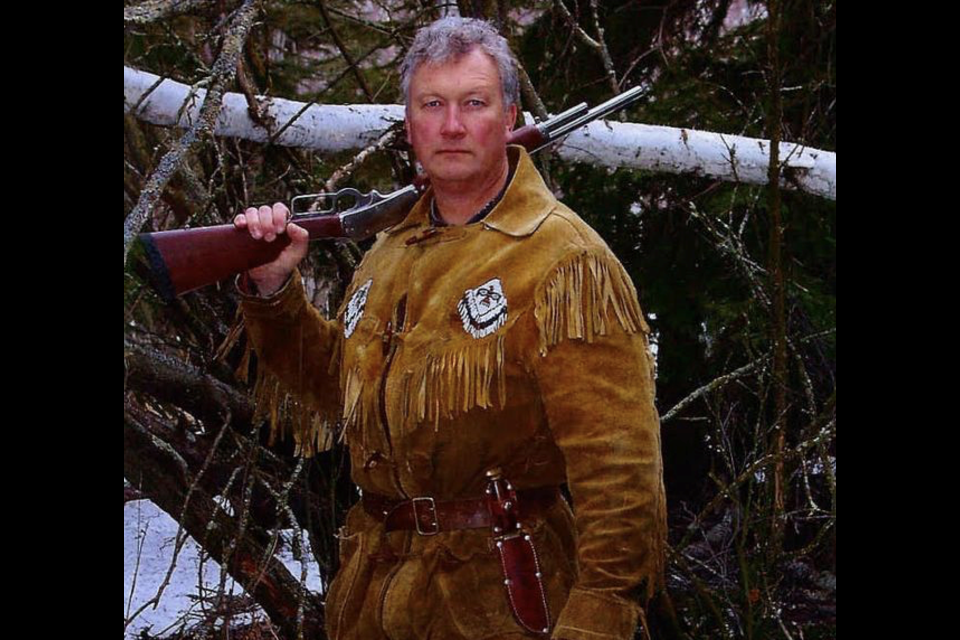Interest in the age-old practice of trapping, wilderness survival and bushcraft has become more popular, according to President of Alberta Trappers Association Bill Abercrombie.
Trappers hunt and trap wild animals for food and their fur.
“It has doubled over the past five years,” said Abercrombie about the interest.
“I’d say definitely there is some increased popularity and interest from reality TV shows, but most of all I think because trappers have many skills based on self-sufficiency, sustainable living on the land and bushcraft knowledge.”
Abercrombie said the Alberta Trappers Association has seen an increased demand to train new trappers and their enrolment is increasing for trapping and bushcraft, where they teach courses on just about everything to do with survival.
“Trappers have a connection to the land and animals like nobody else,” said Abercrombie. “Living off the land in a sustainable lifestyle is a very peaceful and soulful existence and has a lot of appeal. Also, it is something that anyone can do and is a very wholesome activity for families.”
There’s a learning curve developing the necessary skills.
“It takes time certainly but at the Alberta Trapper Association we will train you and continue with additional professional development and mentorship opportunities,” said Abercrombie.
Where you want to trap, what you are trapping, and what type of license you hold determines the equipment you will need, said Abercrombie.
“In Alberta we have resident trappers that trap with permission on privately owned land like farms or ranches; and we have registered trappers that trap on specific trapping areas of crown land called Registered Trapping Areas. They vary from less than 36 square miles to over 360 square miles and encompass most of the crown land in Alberta.
“If you are just on foot in a small area a small assortment of certified humane traps and safety gear, some lure, a pack sack, axe and rifle will get you started,” he added. “Some trappers use their truck exclusively and carry a canoe and pull sled. In more wilderness areas on a registered line an established operation crown land may utilize one or more trapper cabins, a snow machine with sled/skimmer or OHV, enough traps and related gear to manage their trap line effectively and of course food and supplies. The ATA store in Westlock has all trapping-related gear, and the rest can be purchased at the usual outdoor suppliers.”
Trapping comes with dangers if the person hasn't been properly trained and doesn’t have the required safety equipment.
“Killing traps are powerful and designed to kill the animal quickly and humanely according to an international standard,” said Abercrombie. “Restraining traps are less dangerous since they are designed to hold an animal without suffering or physical trauma so that it can be released if appropriate.”
There are ways that trappers stay safe, said Abercrombie.
“A trapper will never be found out in the bush without a firearm for defence against any large predators that may be encountered such as bears, cougars, wolves or wolverine. A trapper may also carry a small calibre firearm for dispatch or harvesting small game.”
It’s a good idea for trappers to be physically fit but not required.
“It helps sure, but trapping opportunities are available for people of all ages, sex and body type,” said Abercrombie. “Being out in the bush regularly is an excellent and very enjoyable way to get and keep physically healthy and fit.”
Canada has the highest trapping standards in the world.
“Trappers go to great lengths to treat all animals with empathy and respect,” said Abercrombie. “A humane and dignified death is not what a wild animal experiences in the natural world when their life is over. Usually, they suffer from intense trauma and pain when killed by another animal or when they are subjected to exposure, diseases, parasitic infection or starvation. In many cases death comes hard and over a period of days or months. The quick end of life is something only a human being has the opportunity and desire to provide.”
There are approximately 2,000 members of the Alberta Trappers Association. The Alberta Trappers Association has had a business open in Westlock for about 40 years and offers a wide variety of courses from everything to beginning trapping courses to advanced trapping courses and bushcraft.
“Bushcraft is the traditional skill set associated with bush travel, working and living,” said Abercrombie. “It is for the most part land based, using naturally occurring resources. Examples would be fire and shelter building, tool making, food and medicine harvesting and foraging, tracking and navigation, tanning hides and skins, preparation of cordage and construction of pack frames of various types, sleds, canoes etc. These skills have been developed and honed throughout human history and this traditional knowledge is highly valued and preserved through teaching.”
The Alberta Trappers Association Education Program is centred at their teaching trapline at the Alberta Center for Trapping and Bushcraft at Dapp but they can also provide training and workshops across Alberta by request. You can visit their websites at www.albertatrappers.com or call their offices in Westlock at 780-349-6626.
The standard trapping course is the requirement for any first-time trapper and costs a few hundred dollars, but it is good for life.
“Licenses are very economical and are purchased annually,” said Abercrombie.



